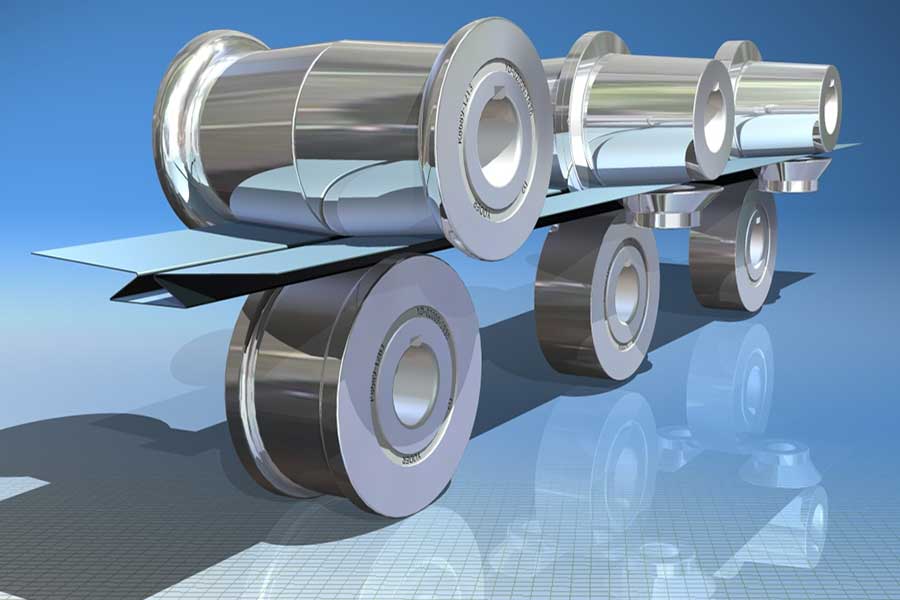
In today's complex engineering world, it is critical to optimize product development processes and identify potential problems in advance. Simulation and modeling techniques in roll forming machines, which are widely used especially in the field of metal forming, offer a powerful toolkit in achieving these goals. Thanks to these virtual studies, potential errors can be identified, design improvements can be made and production processes can be optimized before actual production begins.
The roll forming process is based on the principle that metal strips are passed through a series of profile forming rollers to reach the desired cross-section. In this process, many factors such as material behavior, roller geometry, feed rate can affect product quality. This is where simulation and modeling techniques come into play, giving engineers an in-depth understanding and foresight ability.
Advantages of Simulation and Modeling:
- Early Stage Problem Detection: Thanks to the simulations carried out in the virtual environment, problems such as potential buckling, tearing, springback can be detected before the physical prototype is produced. In this way, costly errors are prevented.
- Optimized Roller Design: Simulations allow to visualize the effects of different roller designs on the product. In this way, the most suitable roller geometry and profile sequence are determined, increasing product quality and process efficiency.
- Reduced Development Time and Cost: By reducing the number of physical prototypes and addressing design errors at an early stage, product development time and costs are significantly reduced.
- Improved Process Understanding: Simulations provide detailed insights into how the material behaves during forming. In this way, process parameters can be better understood and optimized.
- Increased Product Quality: Thanks to optimized designs and processes, more precise and quality products are obtained.
Simulation and Modeling Techniques Used in Roll Forming Machines:
Various simulation and modeling techniques are used in the analysis and optimization of roll forming processes:
- Finite Element Analysis (SEA) / Finite Element Analysis (FEA): This method is commonly used to analyze complex geometries and material behaviors. SEA software can simulate stresses, deformations and potential errors during forming in detail.
- Analytical Models: These are models to understand the basic behavior of the process using mathematical equations and physical principles. It usually gives quick results for simpler geometries.
- Empirical Models: These are models that use data obtained from real experiments. It is used to make predictions for specific process parameters and material properties.
- Digital Twins: A virtual replica of a real roll forming machine and process. It is continuously updated with real-time data from sensors and is used for monitoring, analysis and optimization of the process.
Simulation and Modeling Application Areas:
Simulation and modeling techniques in roll forming machines have a wide range of applications:
- New Roller Profile Design: Determination of the most suitable roller geometry and profile sequence to obtain the desired product profile.
- Optimization of Forming Stages: Determining the optimum number of forming stages required to improve product quality and process efficiency.
- Springback Estimation and Compensation: Making the necessary adjustments to the roller design by estimating the stretching of the material after shaping.
- Material Flow and Stress Distribution Analysis: To understand how the material flows during forming and how the stresses on it are distributed, reducing the potential risk of tearing.
- Improvement of Existing Roll Forming Processes: Using simulations to diagnose problems in production and optimize process parameters.
Result:
The use of simulation and modeling techniques in roll forming machines has become an indispensable part of modern engineering practice. Thanks to these powerful tools, businesses can produce higher quality products in less time and at lower costs, gain a competitive advantage and increase their innovation capacity. The predictions obtained in the virtual environment are an important investment in the future of businesses by directly affecting the success in real production.
